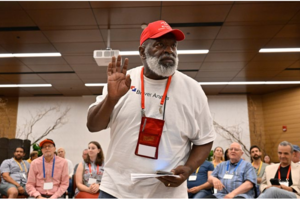9 Logical Fallacies Used by Opinion Writers

If you're into politics, media or policy, then you've surely come across opinion websites and articles. While some are better written and more convincing than others, they all share the common aim of convincing the reader of their viewpoint — but they often do this by appealing to logical fallacies.
Even though opinion pieces by their very nature are subjective, they usually report on factual incidents and influence a lot of people. However, not all opinions are created equal. In fact, many of them use logical fallacies to arrive at their conclusions and convince their audience.
Here are some of the most common fallacies used by opinion writers.
Generalization of people, wherein every person within a group is ascribed the same attributions, regardless of their individuality.
Eg: "Any woman who is pro-life or supports Trump is heartless and doesn't deserve the title of womanhood."
This fallacy happens when something that is true of the parts is assumed to be true of the whole. It also occurs when it is assumed that something that is true for one or some group members is true of the whole.
Eg: "All people who teach children critical race theory are God-hating, left-wing narcissists."
“All journalists have a liberal bias.”
“Conservatives hate the poor and oppressed.”
Fallacy of accident is assuming what is true as a general rule is also true under specific conditions. It can also go vice versa by assuming what is true under specific circumstances is true in general.
Eg: "After Derek Chauvin's conviction, we can be completely sure that there will never be a fair trial by jury again."
Ignoratio Elenchi is a Greek word meaning "ignorance of contestation" or “missing the point.” This is when the conclusion fails to address the issue in question, or the conclusion is one that changes the point of what is at issue in the premise.
Eg: “You should support the new housing bill. We can't continue to see people living in the streets; we must have cheaper housing.”
When someone uses appeals to force, intimidation, threats or blackmail to get the other person to agree.
Eg: "If you don’t denounce the president, there will be more riots and looting."
Attacking someone’s characteristics or character.
Eg: "What would a straight, white cis male know about the Women's March?"
“Obama was a community organizer. He doesn’t know anything about running a country.”
“She doesn’t even belong to a church. She’s not really religious.”
“How could anyone vote for a man with that face?!”
This fallacy occurs when it’s assumed something must be true because many people think it.
Eg: “Cattle farming is bad because most Americans believe we should stop eating so much meat.”
“Marijuana legalization will be a boon to the economy because so many people support it.”
When it is assumed something is right or wrong due to how major leaders or popular figures view it.
Eg: "How can the institution of marriage be supported by feminism when feminist leaders like Kate Millett and Shulamith Firestone are against it?"
A way to convince the reader by inciting the emotions instead of appealing to logic.
Eg: “Failing to support immigration means innocent people will suffer and starve.”
Start to become aware of these fallacies while browsing through an opinion section. It's important to remember that opinion articles only reflect the author’s perspective, and may not reflect the entire truth. Keeping these fallacies in mind will help you to spot the facts lost within the bias.
Avanti Giridharan is a freelance writer. She seeks to empower people through logic and compassion in her writing. When she's not writing, she can be found reading or playing music. She has a Center bias.
This piece was reviewed and edited by Julie Mastrine, Director of Marketing. She has a Lean Right bias.

April 19th, 2024

April 19th, 2024

April 18th, 2024

April 17th, 2024